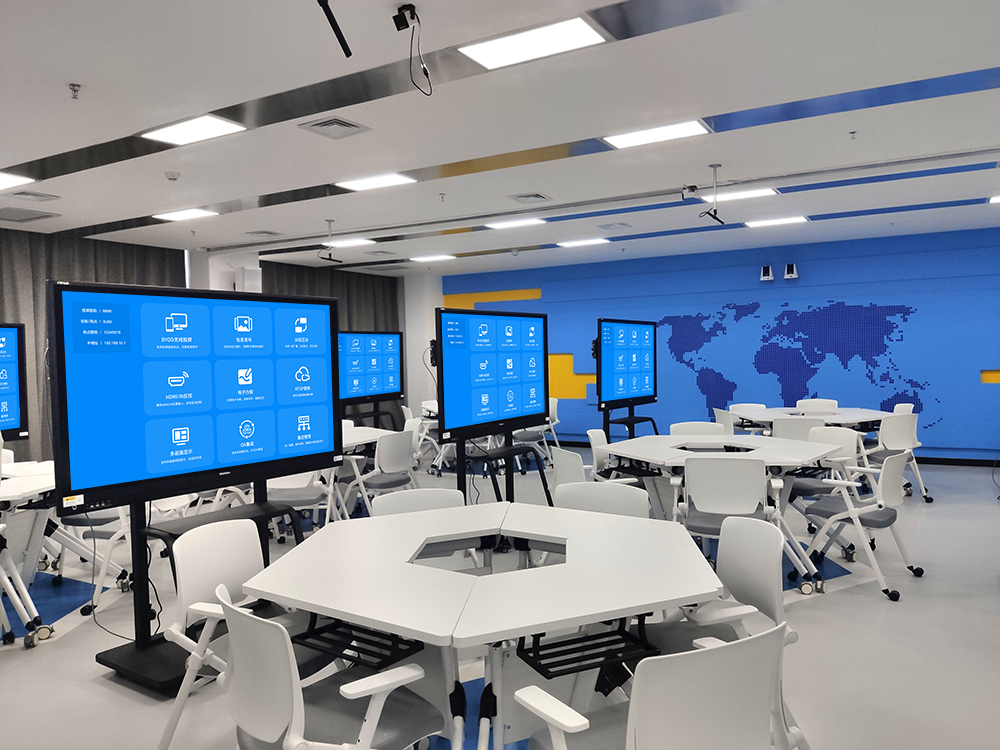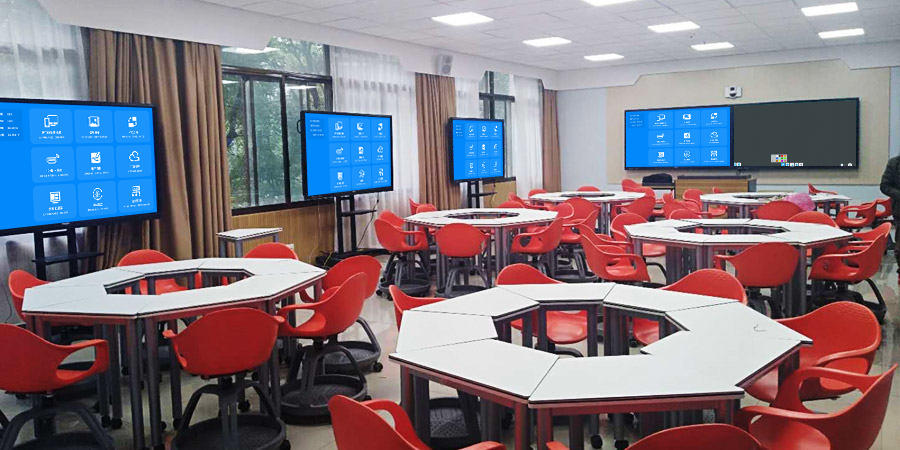Smart Classrooms: Making Teaching and Learning More Interactive
Tired of fragmented devices and weak interaction in smart classrooms? This screen casting device is the perfect solution. It’s compatible with all devices—teachers’ computers, students’ tablets, and phones—and supports instant lesson plan transfer, quick result sharing, and real-time annotation. It’s perfect for lectures, group projects, and practical demonstrations, transforming smart teaching from “one-way output” to “two-way co-creation,” with no technical barriers for teachers or students.
Activate Smart Teaching in One Minute
No complex setup is needed. Quickly create an interactive environment:
- Quick Device Network: Plug the receiver into the smart board or a group’s secondary screen and power it on. The device automatically connects to the campus network and displays a unique ID (e.g., “Grade 8 Class 3 Smart Screen”). Teachers can just plug in the transmitter to connect, while students can join by connecting their devices to the campus Wi-Fi. No drivers are needed.
- One-Click Interaction: The teacher clicks “Teaching Mode,” and the lesson plan automatically syncs to the smart board. Students can use the “Cast Results” feature on their tablets to instantly send a solution or a mind map to their group’s screen or the main screen. The process is so guided that even new teachers can get the hang of it right away.
Key Advantages: Perfectly Suited for Smart Classrooms
Seamless Device Integration
- The device is compatible with Windows, macOS, iOS, and Android systems and has a compatibility rate of over 98% with major brands like Lenovo, Huawei, Apple, and Xiaomi. This ensures smooth connectivity between older classroom computers and newer student tablets.
- It supports “multi-screen collaboration,” where the smart board displays the core lesson, secondary screens show group tasks, and students’ devices receive materials at the same time. This turns devices from “independent tools” into a “unified force” and makes knowledge transfer more comprehensive.
Real-Time Content Flow
- Precise Lesson Plan Delivery: Teachers can divide their lesson plan into sections like “Concepts,” “In-Class Practice,” and “Further Reading.” They can then cast these sections to the smart board one by one, preventing students from getting distracted by looking ahead. When casting a video of an experiment, they can slow it down or freeze frames to make key steps and details clear, even for students in the back row.
- Instant Feedback: After completing an assignment on their tablet, a student can click “Cast to Main Screen” for the whole class to see. The teacher can then annotate the work directly on the smart board, which is 10 times faster than collecting and grading notebooks. Group project results can be cast to a secondary screen, so students can critique each other’s work without having to pass devices around, keeping the discussion focused.
Stable HD Transmission
- The device supports 1080p Full HD casting, so CAD drawings and 3D models appear sharp, and formulas and experiments are crystal clear. The dual-band (2.4GHz + 5.8GHz) transmission is resistant to interference, with a latency of ≤15ms when multiple devices are casting simultaneously. This ensures a smooth flow for live classes and open lessons.
- It’s fully integrated with smart classroom systems, automatically adjusting the casted content to the smart board’s resolution. This allows teachers to focus on teaching without getting bogged down by technical adjustments.

Real-World Scenarios: Empowering Every Aspect of Smart Teaching
Lectures: More Engaging Learning
In a math class, a teacher can cast a geometric model from their computer to the smart board, and a student can use their tablet to drag the model to prove a theorem, with the results cast in real-time. For complex formulas, the teacher can use the device’s “Local Zoom” feature to highlight key steps in the derivation.
In a Chinese literature class, the teacher can play an audio recording of a text while using the smart board to annotate key phrases, which helps students with their reading comprehension. Students can then take a photo of their handwritten reflections on their phones and cast them to the screen to share with the class.
Group Projects: More Proactive Collaboration
In a science class, groups can take photos of their experiments with their tablets and cast them to their secondary screen for discussion. When they find a problem, they can cast it to the main screen for the whole class to analyze. The teacher can then demonstrate the correct connection on the smart board, which significantly deepens the learning experience.
In a project-based learning class, a group can organize their research and create a presentation on a tablet. After optimizing it on their secondary screen, they can cast it to the main screen for a full class presentation. This shifts students from “passive learning” to “active sharing,” which significantly improves their self-learning skills.
Practical Demonstrations: More Precise Guidance
In an auto repair or electrical engineering training class, the teacher can cast a video of a device being taken apart to the smart board, and use the local zoom to explain the internal structure. When students are doing their hands-on practice, they can upload photos of their work to the screen, and the teacher can annotate their mistakes on the smart board without having to check each student individually.
In an art class, a student can draw on a tablet and cast it to the smart board, and the teacher can provide real-time feedback on color theory and composition. This provides more precise professional guidance and helps students improve faster.
Practical Details: Worry-Free Use in Smart Classrooms
- Secure Permission Control: Only the teacher and students in the class are authorized to cast. The device also supports a casting password to prevent disruptions from unauthorized content. Integration with the school’s management system allows for tracking casting frequency and interaction data, which helps with teaching analysis.
- Portable and Easy to Maintain: The device is small enough to fit in the palm of your hand and weighs less than 40g, so teachers can easily take it with them for research and training. Schools can also manage devices and update firmware in batches, which simplifies IT management.
- Durable and Stable: The shell is made of a wear-resistant and drop-proof material, and it can be used continuously for 24/7. This makes it perfect for the high-intensity demands of a smart classroom.
By using this device to build a smart classroom, you can make interactions smoother and knowledge transfer more vivid, truly activating the vitality of smart teaching and helping to improve classroom efficiency and quality.